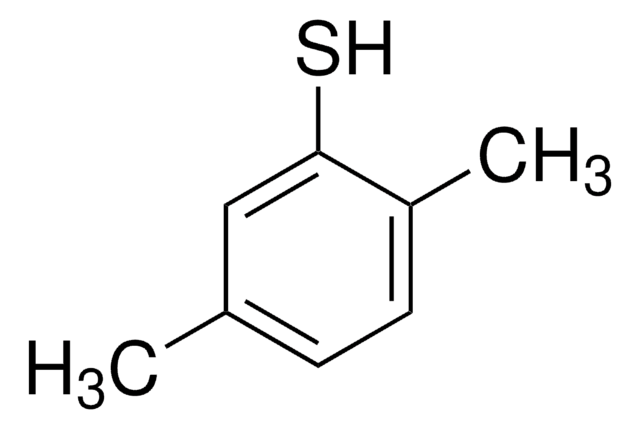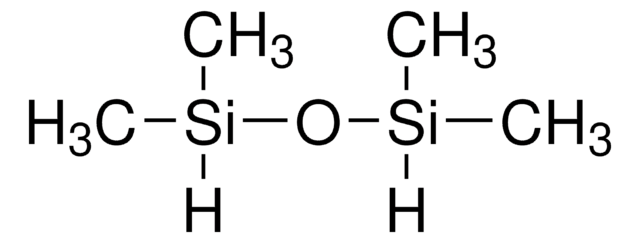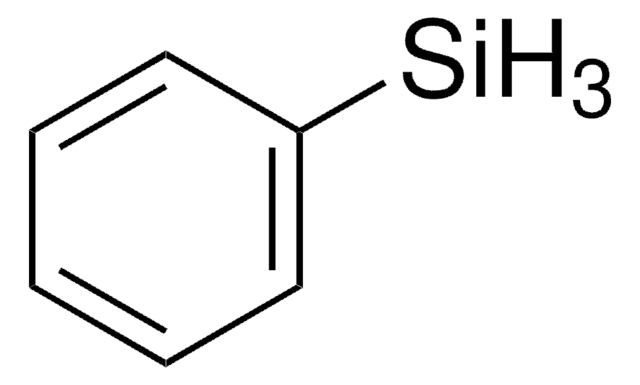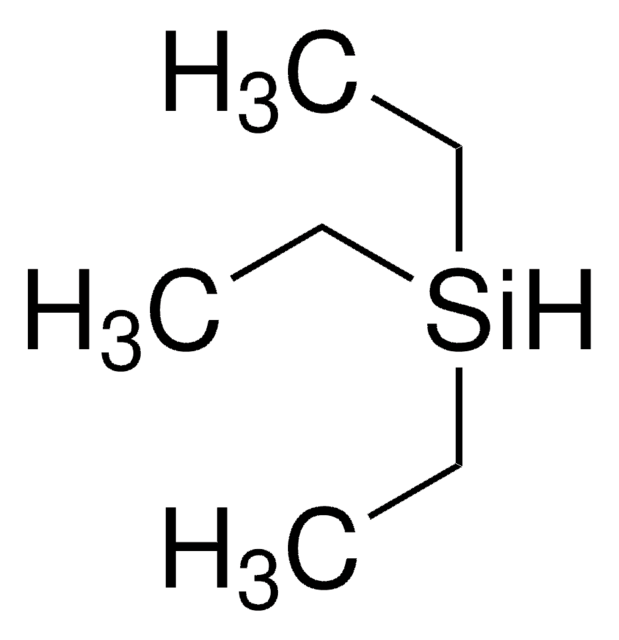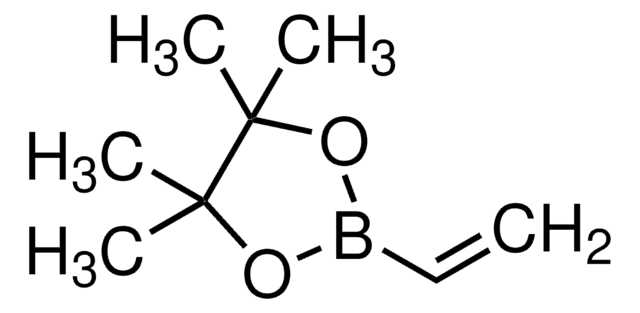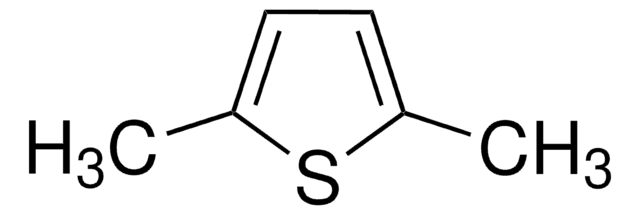324647
Allylboronic acid pinacol ester
97%
Synonyme(s) :
2-Allyl-4,4,5,5-tetramethyl-1,3,2-dioxaborolane, 4,4,5,5-tetramethyl-2-(2-propen-1-yl)-1,3,2-dioxaborolane, 4,4,5,5-tetramethyl-2-(2-propenyl)-1,3,2-dioxaborolane, Allyl pinacol boronate, Pinacol allylboronate, Pinacolyl 2-propenylboronate
About This Item
Produits recommandés
Niveau de qualité
Pureté
97%
Indice de réfraction
n20/D 1.4268 (lit.)
Point d'ébullition
50-53 °C/5 mmHg (lit.)
Densité
0.896 g/mL at 25 °C (lit.)
Température de stockage
2-8°C
Chaîne SMILES
CC1(C)OB(CC=C)OC1(C)C
InChI
1S/C9H17BO2/c1-6-7-10-11-8(2,3)9(4,5)12-10/h6H,1,7H2,2-5H3
Clé InChI
YMHIEPNFCBNQQU-UHFFFAOYSA-N
Catégories apparentées
Description générale
Application
- Palladium-catalyzed Suzuki-Miyaura cross-coupling reactions and olefin metathesis
- Intermolecular radical additions
- Allylboration of aldehydes catalyzed by chiral spirobiindane diol (SPINOL) based phosphoric acids
- Cobalt-catalyzed regioselective hydrovinylation of dienes with alkenes
- Nucleic acid-templated energy transfer leading to a photorelease reaction
- Stereoselective indium-catalyzed Hosomi-Sakurai reactions
Reagent used in Preparation of
- Cyclic sulfone hydroxyethylamines as BACE1 inhibitors for reduction of Amyloid β-Peptides
- Transmetalation of carbene Ru iodide with Ag carboxylates to give C-H-activated Ru carbene complexes as catalysts for Z-selective olefin metathesis
- Allylboronation reagent for the preparation of allylic alcohols, and homoallylic amines.
Mention d'avertissement
Warning
Mentions de danger
Conseils de prudence
Classification des risques
Flam. Liq. 3
Code de la classe de stockage
3 - Flammable liquids
Classe de danger pour l'eau (WGK)
WGK 3
Point d'éclair (°F)
114.8 °F - closed cup
Point d'éclair (°C)
46 °C - closed cup
Équipement de protection individuelle
Eyeshields, Faceshields, Gloves, type ABEK (EN14387) respirator filter
Faites votre choix parmi les versions les plus récentes :
Déjà en possession de ce produit ?
Retrouvez la documentation relative aux produits que vous avez récemment achetés dans la Bibliothèque de documents.
Notre équipe de scientifiques dispose d'une expérience dans tous les secteurs de la recherche, notamment en sciences de la vie, science des matériaux, synthèse chimique, chromatographie, analyse et dans de nombreux autres domaines..
Contacter notre Service technique